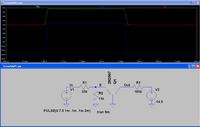P
ParkerMike
Guest
What do Series Pass Transistor do? or used for?
I seen them used as a switch
In the schematic it's a series pass transistor
I'm not sure why the designer used the transistor in this configuration because the base is grounded with the emitter at Negative - 14.5 volts
The Only thing I can think of is because a Negative -14.5 vdc would damage the base to emitter junction if they used it in a different transistor switch configuration

I seen them used as a switch
In the schematic it's a series pass transistor
I'm not sure why the designer used the transistor in this configuration because the base is grounded with the emitter at Negative - 14.5 volts
The Only thing I can think of is because a Negative -14.5 vdc would damage the base to emitter junction if they used it in a different transistor switch configuration

